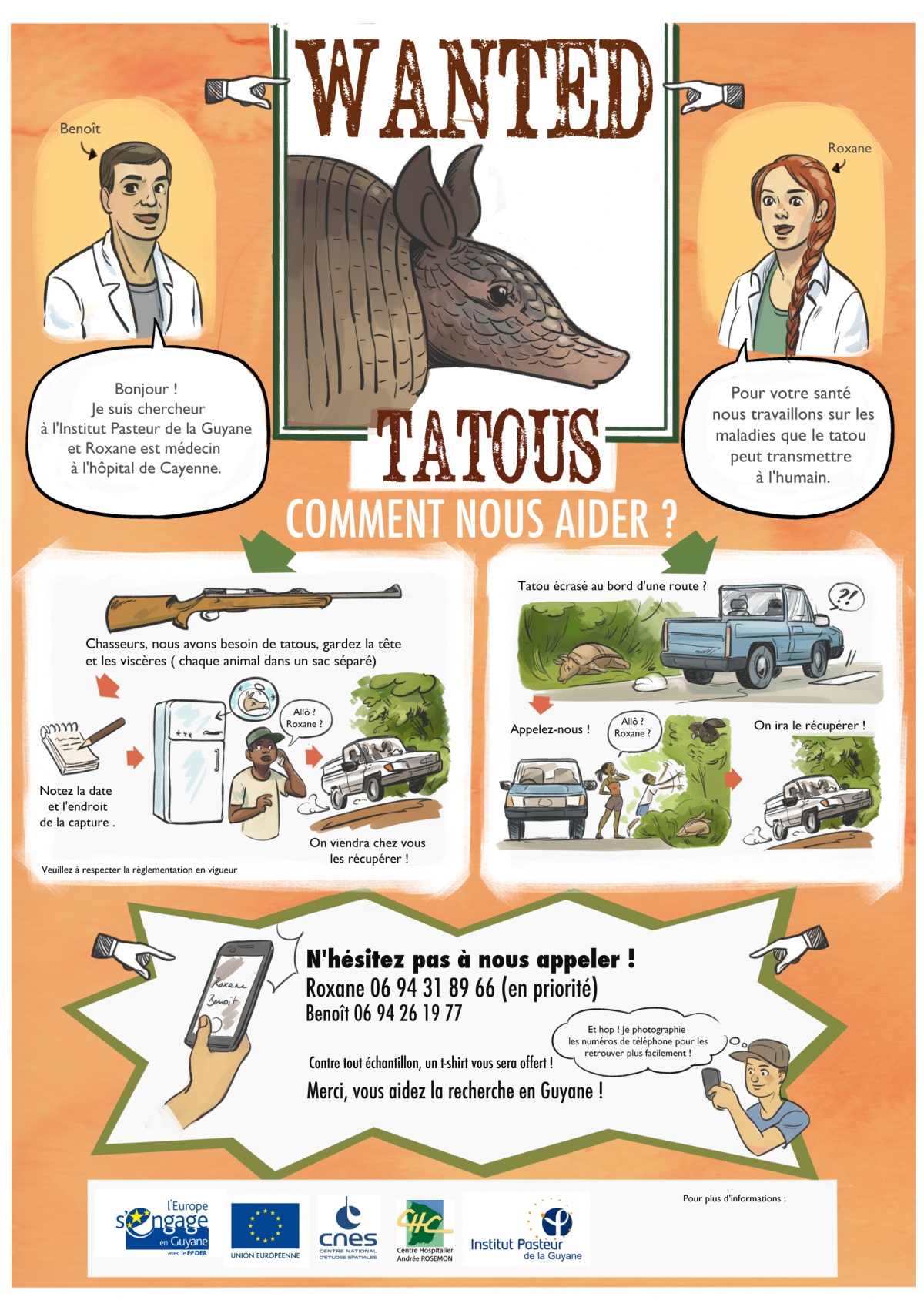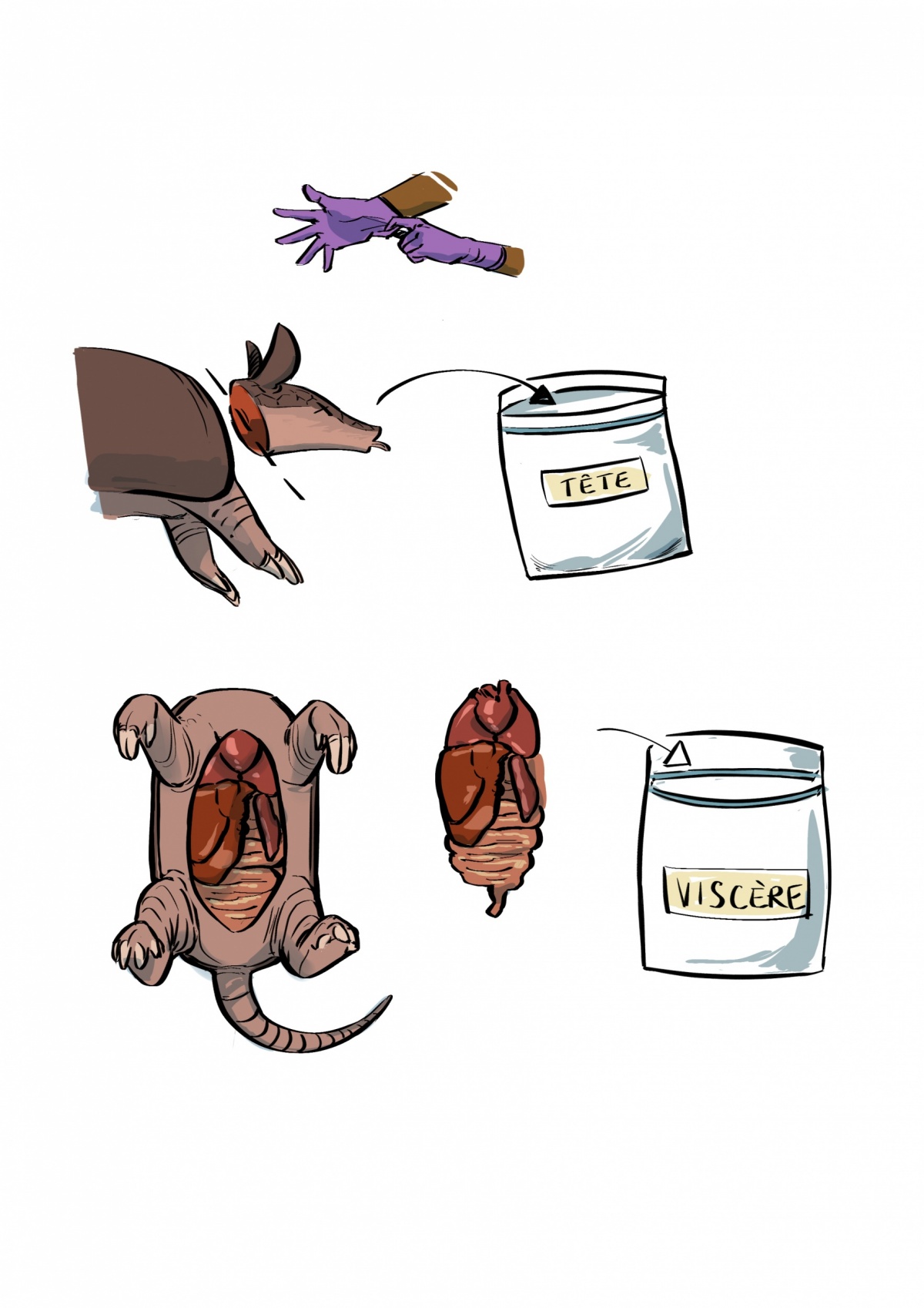Armadillos for medical research
Finding the source of leprosy contamination
The Institut Pasteur, Cayenne Hospital and CIC-EC (Clinical Investigation Center-Clinical Epidemiology) have joined forces to conduct research into the re-emergence of leprosy. The three organizations and their researchers are working together to determine the natural reservoir.
The first finding is that people living in or near forests are more likely to be infected. Meanwhile, in neighboring Brazil, studies have revealed the presence of the leprosy bacillus among armadillos. These animals, which are also present in French Guiana, could therefore be carriers. Transmission is possible by hunting, cleaning or eating armadillos.
Local involvement in research
To validate this hypothesis, at least 300 samples of the animal had to be collected. The Ink Link was given the task of creating an attractive medium, addressed to local residents, to encourage them to donate the bodies and organs (especially the spleen) of armadillos they had encountered.
Our artist Gaëlle Hersent volunteered for the project. She had already spent several months in the region and knows the environment well, so an immersion mission was not planned.
We have agreed to produce several illustrations and a poster aimed at hunters and people passing through. They will be distributed in places frequented by hunters and online. Here are the visuals that make the scientific study tangible and easily explain how to harvest the organs.




